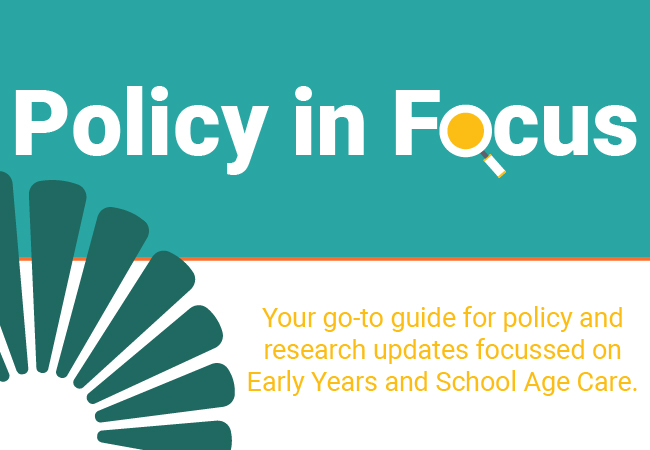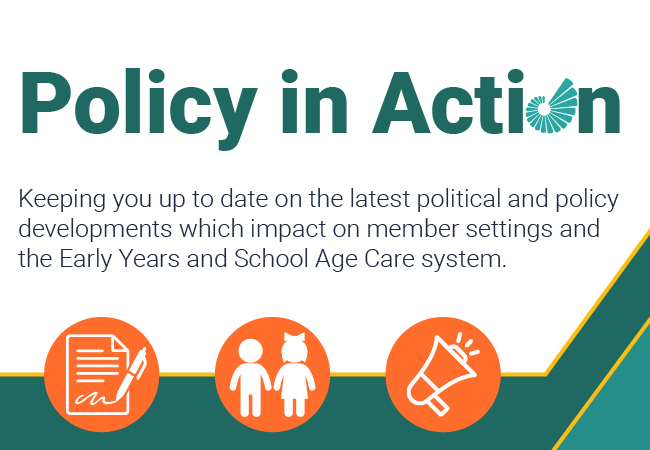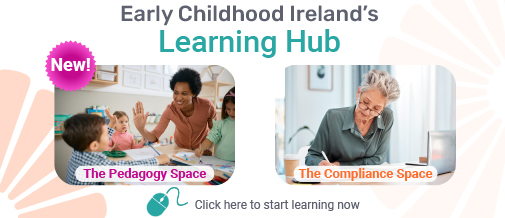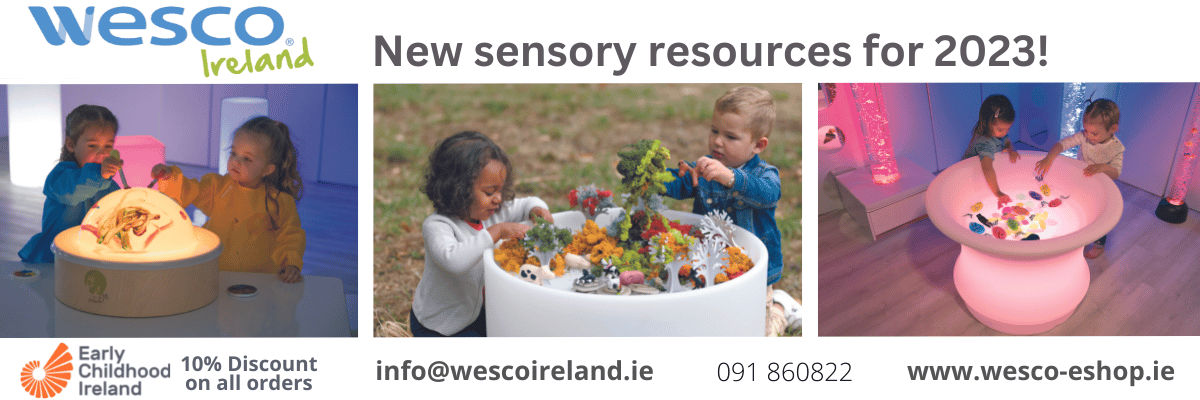Wings to the Imagination
Plato is said to have believed ‘Music gives a soul to the universe, wings to the mind, flight to the imagination and life to everything.’
I love this quote and I believe that music is a powerful, enjoyable and fun way for children to experience movement, listening, playing and sounds. But, probably like many of you I have been in settings where all I wanted was headphones to block out the din made by 20 children all creating sounds of their own, that no one can hear properly, in the name of music! On the other hand, the thoughtful, considered use of music in all its forms can add immeasurably to the children’s experiences on a daily basis.
In her book Sounds like playing, Marjorie Ouvry applies the principles of early childhood education to music. On the same line, I am going to look at the four themes of Aistear in relation to music!
So, making this happen! Look around the play space, inside or outside, are there children humming, singing, talking about music? Do you have a music area, where children can explore sounds and music and maybe listen to CD’s or music on a tablet?
Is music playing constantly? If so, it is likely that no one is ‘really’ listening to it. Make music more intentional.
Engage with children in small groups, music is not a large group activity! In the baby room, for example, put on a CD, draw the babies’ attention to it. Watch how they respond: do they sway, smile, clap hands? With a small group of toddlers again put on some music…watch their response… how do they move, do they move fast if the rhythm is quick, do they move slowly if it is ballet music? Children over 3 can be introduced in a similar way, maybe asking them what the music sounds like, how does it make them feel, how do they want to move to the music? Sheet music can be introduced so children see what music looks like written down.
Do educators in your setting play an instrument? Do parents play? Invite them to bring their instrument to the setting. Suggest they just start playing and watch the reaction of the children, whatever age. The children will be curious, let them touch the instrument, let them see how it makes sounds. Enable them to explore and feel it. Encourage families to share they music they listen to or play at home. This exposes all children to music from different cultures and traditions and makes all children visible in the setting. Use the names of the instruments, composers, singers and genres.
Music should not be confined to indoors: go outside! Make music and sound exploration areas. This can be done with recycled materials.
Early Childhood Ireland was involved with the Tiny Voices music initiative a few years ago. This was a music project with preschool children. The report of the project is here, along with some of the music from the initiative. I particularly love the song Beautiful Rain!
How do you use music in your setting? We would love to share your thoughts, ideas and photos!












